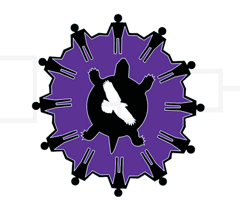Abstract
Abstract
Background- American Indian and Alaska Native (AIAN) populations experience more health disparities than any other racial/ethnic group in the United States. Developing a skilled AIAN public health workforce is one way to address health disparities and build a new generation of public health workers.
Approach- To address this call, the Rocky Mountain Tribal Leaders Council (RMTLC) developed the Public Health Workforce Expansion in Indian Country (PHWEIC) project. PHWEIC is a 5-year project funded by the Centers for Disease Control and Prevention. This evaluation focused on process and impact measures related to building the public health workforce.
Methods- PHWEIC participants were invited to take part in semi-structured interviews to assess their experiences with the program. Authors recorded interviews, transcribed responses, and analyzed the data. Thematic content analysis was used to determine common themes then organized using a process and impact evaluation framework focusing on exposure, reach, quality, satisfaction, and potential impact. Codes were grouped into categories and key categories were summarized. The data was then quantitized utilizing MAXQDA software, each interview was coded and sub-coded to capture the main themes.
Results- The evaluation revealed that PHWEIC had a positive impact on individuals and building the future tribal public health workforce. Themes also demonstrate the benefits to working locally, barriers to participation, interest in public health, and activities that support public health. Findings show that the PHWEIC approach builds interest, capacity, community awareness, and confidence. There is clear evidence that PHWEIC adds value and impact to Tribal communities in Montana.
Recommended Citation
Restad, Desiree; Kelley, Allyson; Porter, David; Kindness, Lauri; Farmer, Christie; and Weasel Bear, Nadine
(2021)
"The Next Generation of American Indian Public Health Workers: What we learned from the PHWEIC project,"
Journal of Indigenous Research: Vol. 9:
Iss.
2021, Article 4.
Available at:
https://digitalcommons.usu.edu/kicjir/vol9/iss2021/4

